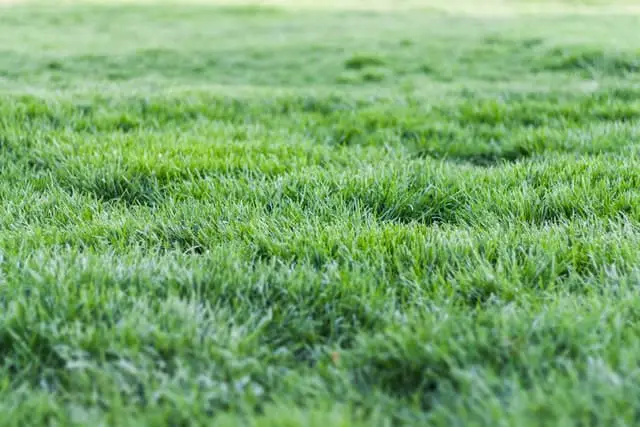St. Augustine grass among the most popular lawn grasses and it’s not complex to see why. It’s tolerance to heat and humidity, fast spreading ability and beauty makes it the perfect choice for any yard.
Also, St. Augustine grass is a dense, robust, carpet-like lawn grass that thrives in warm temperatures and makes magnificent lawns. Compared to most warm-season turf grasses, the St. Augustine lawn has a dense growth pattern that spreads quickly. Here is a detailed guide on how to make St. Augustine grass spread quickly.
People usually opt for lawns that are beautiful and manageable. You’ll most likely notice alexander grass, also known as tropical signal grass, growing along with St Augustine’s grass if the grass is not resistant to weed growth.
Hence you should take reasonable care in the initial months after laying St. Augustine grass (Stenotaphrum secundatum).
With proper care, upkeep, and a warm climate, it is a shade-tolerant, thick, and durable turf that can tolerate the heat. This post is ideal for you if you want to establish a new lawn in your yard in an even and timely manner.
How To Make St. Augustine Grass Spread Quickly

In hot temperatures, St. Augustine grows and spreads quickly. It produces a firm, thick turf that can withstand both shade and heat provided that it is appropriately taken care of. Many people who want to establish a new lawn are unsure how to make St. Augustine grass spread fast.
It can be simple with a bit of effort and the correct knowledge. In order to understand the preparation and management of the St. Augustine’s grass article might be of great help. Also, you’ll know what to watch out for to prevent its slow and weak growth.
St Augustine’s grass will spread as it grows. Horizontal growth branches, known as stolons, pass just above the earth, generating this characteristic growth pattern. It enables speedier coverage and reduces waiting for plugs to be inserted.
This is why St. Augustine has a great chance of producing thick, carpet-like grass. Here’s how to do it
- Select the soil appropriate for St. Augustine Grass– The soil best suited for this growth is sandy soil, where the PH range is 5 to 8.5. Acidic pH tends to fast growth and spread of the grass. Prefer testing the soil with Agrilife soil testing service to detect soil health and quantity. Instead, you can check the soil quality at home with a DIY test kit.
- Fix a schedule for appropriate maintenance– Effectively maintain the grass with regular watering, fertilization, and mowing. You should maintain the height of the grass at 3 to 5.4 inches. The application of fertilizers in small quantities also improves growth. Lesco is best suited as the phosphorus content in it is 10-0-7. A high amount of phosphorus is required for the growth of the plant.
- Plant St. Augustine grass in summer- Planning to establish the lawn in mid-summer to increase the growth and spread of the grass all over the garden. This grass will not spread well in cold climatic conditions.
- Effectively control weeds– It’s also possible that you’ll need to eradicate weeds early enough to avoid nutrient competition and allow your lawn to thicken.
Unwanted weeds in your field will contend with your St. Augustine grass for essential nutrients. Weed irruption can seriously limit the target factory species’ growth and spread.
How Long St. Augustine Plugs Spread?

A newly installed Augustine grass to spread takes nearly 7 to 14 days. Plugs are required for firm root establishment and spreading the grass in the soil. Depending on the plug spacing, the spread of the grass depends. You can do two types of Plug installation.
- High-Density plug installation- This method requires a 6-11-inch gap between sprigs to allow proper root development. When the roots get enough nutrients from the soil despite the close spacing, the chances of a quick fill-in increase.
If conditions are ideal, you should get a fully-filled, thick, lush green grass in 6-8 months.
- Typical Density plug installation- St. Augustine grass plugs must be placed 12-18 inches apart in this density setting. The St. Augustine grass plugs will spread more slowly at this density, and bare spots on your lawn will take longer to fill in. The natural grass will take 8 to 10 months to fill in.
- Low-Density plug installation– St. Augustine grass often takes well over a year to spread and fill in across a standard-sized backyard lawn. So fill out over the entire lawn with such wide spacing. Hence this option is considered best for lawns.
Factors That Limit St. Augustine Grass Spread
Several factors can prevent your St. Augustine grass from spreading quickly. Here are some of the most common ones.
1. Improper Watering
Watering correctly plays a great role in the healthy growth of your St. Augustine grass. Underwatering exposes the grass to the risks of pest and disease infestation, and stress. Overwatering is also bad for the grass, as it can cause its roots to become shallow. Besides, it can cause diseases to attack the grass, making it look unattractive. When it comes to watering your St. Augustine grass, moderation is the key.
2. Poor oil Quality
For St. Augustine grass to grow healthy and spread uniformly, it needs a rich soil. Inspect the soil for organic matter, nutrient content, and PH balance before growing your grass on it. Keep the soil as nourished as possible to create the perfect conditions for your St. Augustine grass to grow.
3. Traffic
Foot or vehicle traffic can result in soil compaction, making it harder for your St. Augustine grass to grow. Apart from limiting root growth, soil compaction can prevent air circulation and water movement in the grass. Limit all forms of traffic on the lawn or create a barrier if you live in a busy area.
4. Insufficient Sunlight
While this grass can survive in an area with partial shade, it prefers direct sunlight. If they don’t receive enough light, the grass will become thin and look unappealing. Also, they’ll be susceptible to pests and diseases. Get rid of anything, maybe a tree branch, that may be preventing the grass from receiving direct sunlight every day.
Final Thoughts
To conclude, St. Augustine grass is turfgrass that spreads quickly. However, a few factors can help you increase the rate of spreading. Always begin with a soil test to properly treat your lawn for maximum development.
Several factors, including soil type, lawn management, and planting/installation timing, influence the rate at which St. Augustine grass spreads. We hope that this information was helping in solving all your doubts regarding how to spread and thicken your St. Augustine grass.
Remember, though, that planting your grass in the summer and adequately watering it will encourage it to grow and spread quickly.
Fortunately, this article will walk you through the process of speeding up the spread of St. Augustine grass.
See a previous post: How To Remove Rocks From The Yard
Frequently Asked Questions
Can We Use Fertilizer?
Yes, we can use fertilizers. But the used fertilizers should comprise nitrogen, potassium, and phosphorus in 3:2:1 helps in the fast growth of the grass. Before buying the fertilizer, kindly verify the composition.
How To Make St. Augustine Leaves Thick?
Many factors may be causing your St. Augustine grass to become yellow. During the rainy days, the nitrogen in the soil may have been washed away, causing the grass to be yellow. Nitrogen is necessary for grass to grow green.
Iron chlorosis or an iron shortage could be the reason for yellowing grass. Using a liquid iron or granular fertilizer throughout the summer can help prevent this.
When Can We Cut The St. Augustine Grass?
You should cut St. Augustine grass at the height of 2 to 3 inches at all times. Allowing your lawn to grow over 3 inches puts you at risk of mowing through the stems. You cut off the nitrogen supply and reduce part of the shade to the turf if you mow it too short.

Hey, I’m Lisa and I’ve been an avid gardener for over 30 years. I love writing, talking and living in the garden! Feel free to connect with me on my socials below

